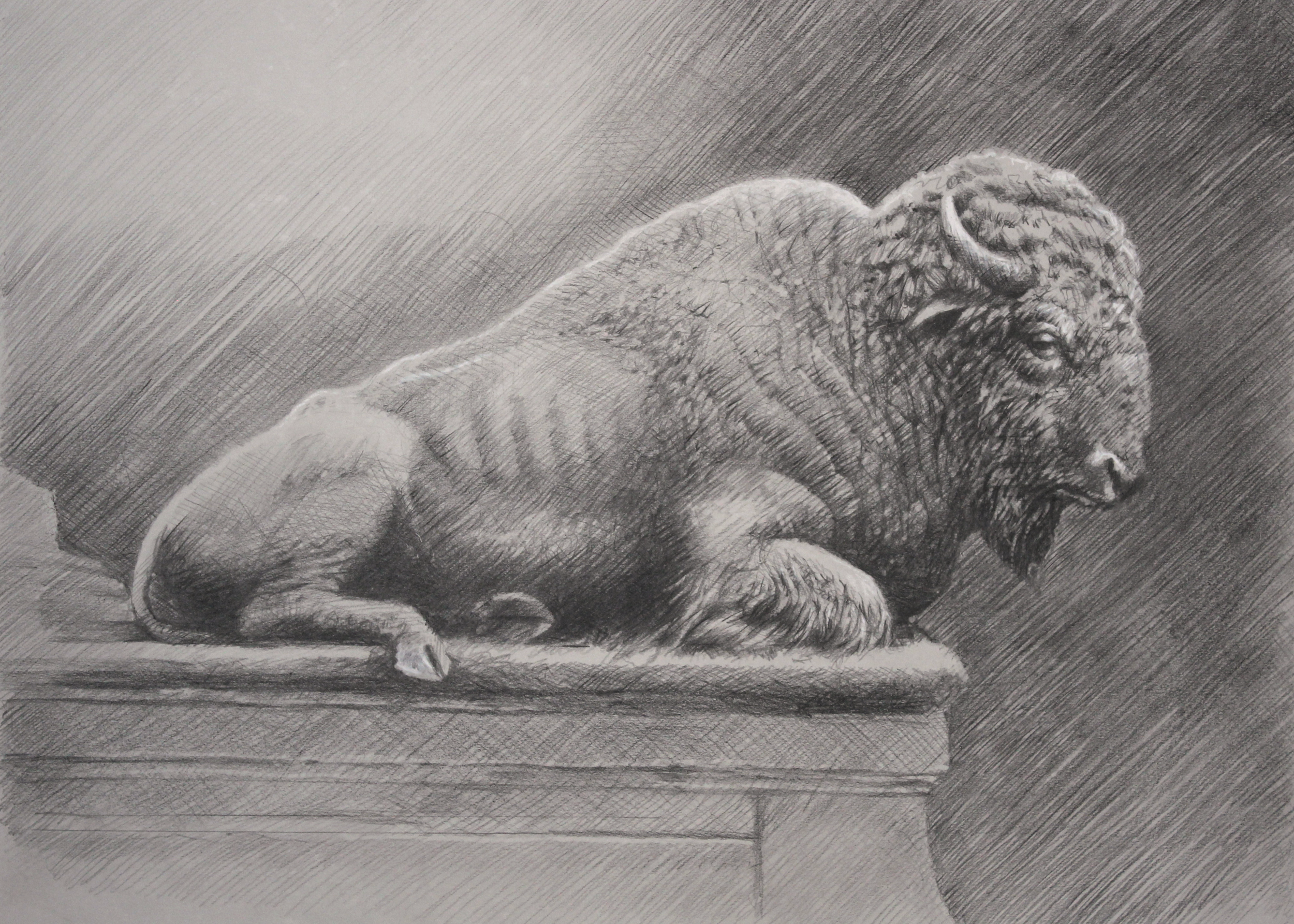The expression snapshot, to mean an instant in time, was already in use by 1897. The sense of a photo’s instantaneousness, summed up in the shutter’s split-second sound, is rooted deep.
But there are photographs that play strangely with time. Rough waters, captured on the wet plate negatives of the 19th century, can look like still pools of mist, and bodies in motion may appear translucent. Amid crisp details in a landscape or street scene we may make out faint blurs and residual shadows left by anonymous passersby.
To decipher these traces is a kind of reanimation: attune yourself to these rhythms, restore the breath to the arrested moment, and the experience becomes cinematic—as long as you can be both viewer and projector.
• • • • •
My source for the drawing was a photo found online. It shows a stranded bark, its rigging in disarray, identified as the wreck of the Hannah, 1849. But when I tried to learn more about the Hannah, which sank after striking an iceberg en route from Ireland to Quebec, with fifty passengers perishing, I concluded it couldn’t be the vessel pictured, whose end was surely less catastrophic. The picture’s backstory, then, was not for me to know.
• • • • •
Although a photo may describe an instant in time, a drawing may take weeks. In that time, storylines may emerge, characters develop, moods evolve. To derive a drawing from a photograph, then, is not so much a copying but an unfolding. The narrative of that frozen moment must be adapted, rewritten, restaged.
The source photo was meanwhile of a very degraded quality, many of its details blurred and indecipherable. Much of it would have to be reimagined in my rendering.
While working on the drawing in late January I looked up at the clouds every day, between the frequent storms, trying to memorize patterns and behaviors. I took a trip North to where the Russian River meets the ocean and forms a delta. With the unfinished drawing still fully in mind, I studied the contours and textures of the sandbars there along the ragged coastline.
And thus attuned, I would return to the drawing and further develop the textures of sand and sky. Soon the setting had become, unmistakably, the Pacific coast, between winter rains.




